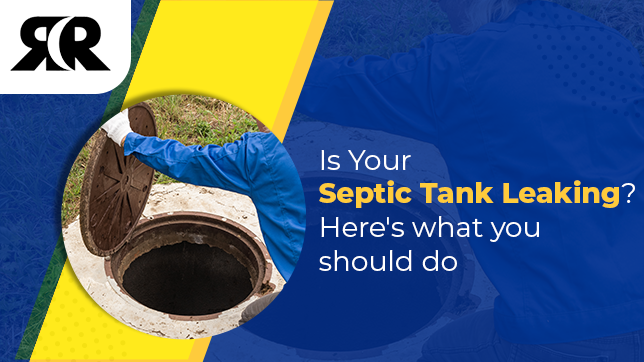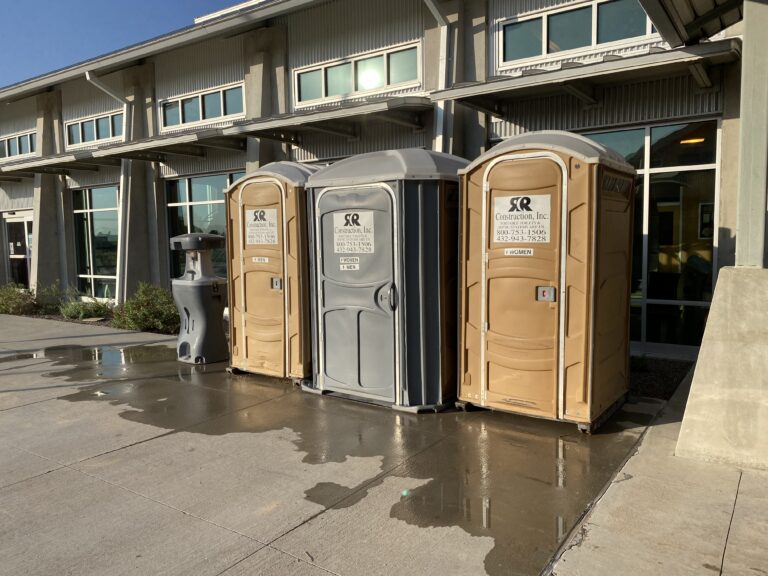Septic systems provide an extremely valuable service, which we seldom think about. However, a septic tank leaking into the yard is the only thing we can think about in case of a faulty tank. The water use becomes restricted inside and outside, and the septic tank leaking into the yard endangers the community’s environment and health. In this article, we will cover the workings of the septic systems in many ways to identify the septic tank leaking and what exactly you require to do in the event of a leak.
How Does A Septic System Work?
While there are multiple septic system designs that exist in the market, the basic function is the same. They are all specifically designed to convert the blackwater and the grey water from the households into less contaminated effluent, which can blend with the groundwater so that it will not negatively impact human health or the environment.
How Do You Know If the Septic Tank Is Leaking?
Suppose the septic tank is susceptible to leaks and other damage. In that case, all these issues are often accompanied by the warning signs such as abnormally lush vegetation, odd smells, and overflowing toilets. An overflowing septic tank can result from several factors, namely, a failure to maintain the system properly. The presence of cleaning products in the wastewater, design flaws, and environmental factors are also some of the common causes. The old and new systems may experience problems, and system failure can suddenly occur if the new family moves into the house, as the cooking, laundry, and showering habits often differ from those of the previous residents.
Here are some of the warning signs that your septic tank is leaking :
1. Insufficient maintenance
It does matter how frequently the tank is pumped on the tank’s size and how much wastewater it will handle. As the wastewater goes through the tank, nonbiodegradable materials immediately settle on the tank’s bottom as solid waste. With time, the sludge level rises. This is recommended that the septic tanks be pumped every three to five years to prevent overflow.
2. Cleaning products kill useful bacteria
As we have mentioned above, the bacteria found in the septic tank will help to break down the wastewater before that continues to the drainage field. The solids will only break down if the tank’s bacteria levels are sufficient. They may start to accumulate at a faster rate than usual. It may lead to the tank overflowing or clogging the drainage pipes or trenches.
Any cleaning products that are toxic to human beings may also kill off the bacteria that are necessary to maintain the septic system. The level of bacteria may drop due to the cleaning products present in the wastewater. For such reason, it is crucial that cleaning products such as bleach, toilet cleaners, or any disinfectants do not make their way into water piping. You can contact RR Waste & Septic for the septic maintenance contracts in Monahans, TX.
3. Damaged pipes between the tank and the drainage field
As the wastewater has been broken down leaves the septic tank that travels through several pipes and into the drainage field. If the pipes in these areas are damaged, that can also lead to overflow. Overflow can also result from clogged pipes. At times tree roots manage to grow through those pipes, which may cause the pipe walls to collapse and will prevent proper drainage.
4. Poorly designed system
Overflow occasionally results from the system has been designed improperly. Drainage pipes typically require 1 to 2 percent slopes so the wastewater can drain properly. If this pipe slope is too shallow, then the wastewater will not flow as needed, and the pipe should be replaced.
How To Fix A Leaking Septic Tank?
When you know that you have to get a leak on your hands, here are our top tips that you can follow:
1. Do not pump the water out
We will start with what you absolutely should not do – do not pump water from your tank into your yard. It poses a severe health hazard, as pets and children could walk through it, and it can make its way into a stream. It, in turn, can lead to waterborne diseases that can be quite deadly and spread rapidly from one person to another.
2. Determine the exact location of the system
When the tank is flooded, the water will come through the inlet and the outlet pipes; the manhole covers the tank. This may then fill the tank with groundwater that may carry soil and silt.
You must find where the tank and drain field are on the property. If you are unsure, call the health and district office in the area.
3. Inspect for the damage
Inspect the septic tank and the drain field for any indication of damage. There are common indicators things as holes in the soil or soil settling. If you observe any signs of damage, you can hire a licensed professional to come and inspect the system.
4. Measure the depth of the groundwater
Measure the groundwater depth around the tank and the drain field. You can do this with the soil probe or dig the hole using the drill.
5. Reduce the water use
When the septic system can be used again, that is helpful for the household to reduce the use of water even if the faucet drips only when one drops every 15 seconds; over time, that can add up to a large volume of the water in the septic tank. Getting a Septic Maintenance Contracts Pecos TX from a reputed firm can save you money and headaches in the long run.
Contact RR Waste & Septic for Your Septic Needs
Proper septic tank maintenance starts by monitoring the water usage closely and what goes into the septic system. Ensure that the gutters and the sump pump the empty water far away from the drain field when considering septic maintenance contracts in Midland, TX. If you are running out of time because of the busy, bustling days, then you always have the option to reach out to RR Waste & Septic. For details, you can reach out to our septic tank contractors near me or go over a call to book your appointment now. We are always here at your service.


